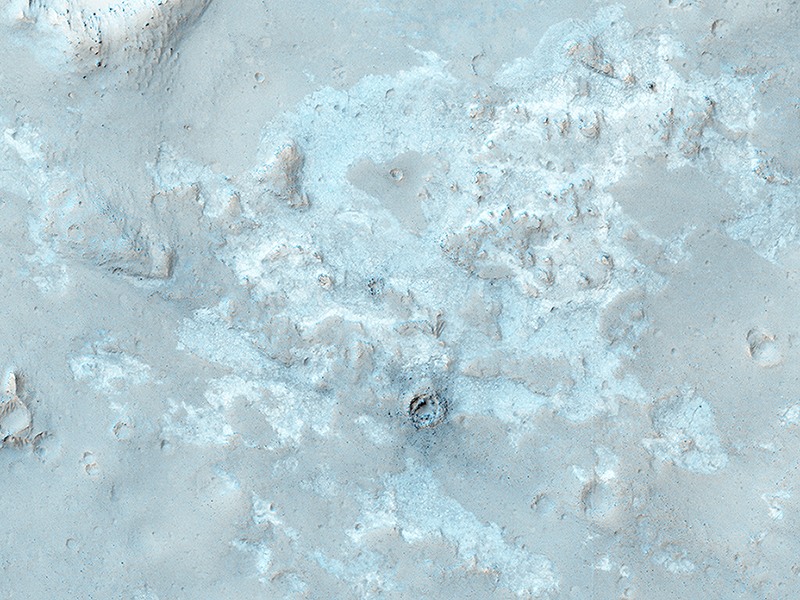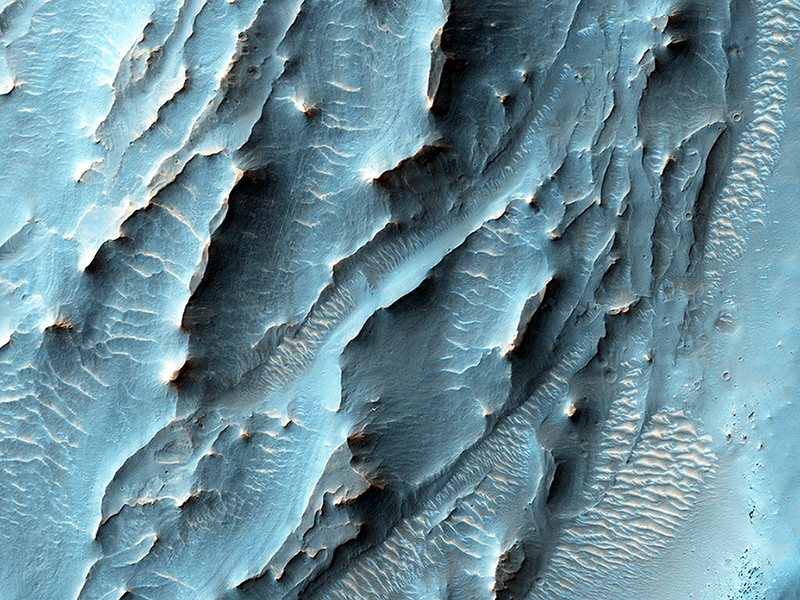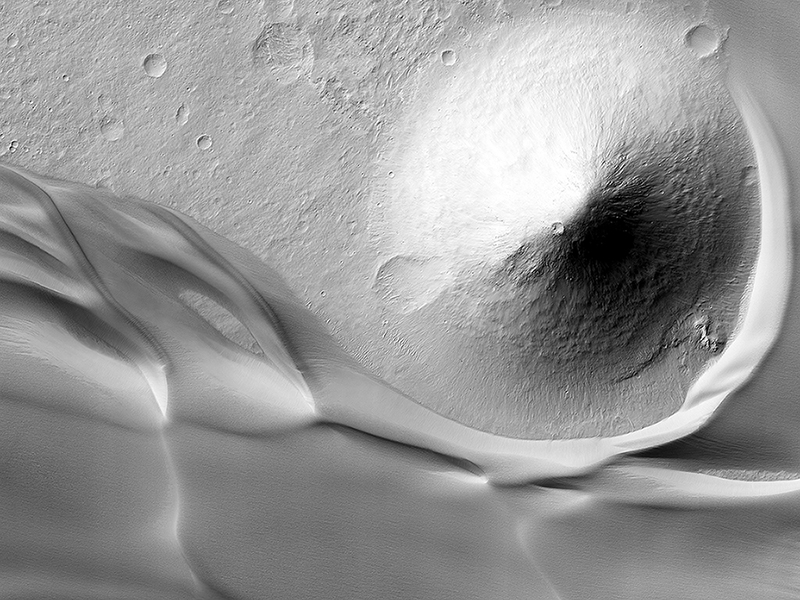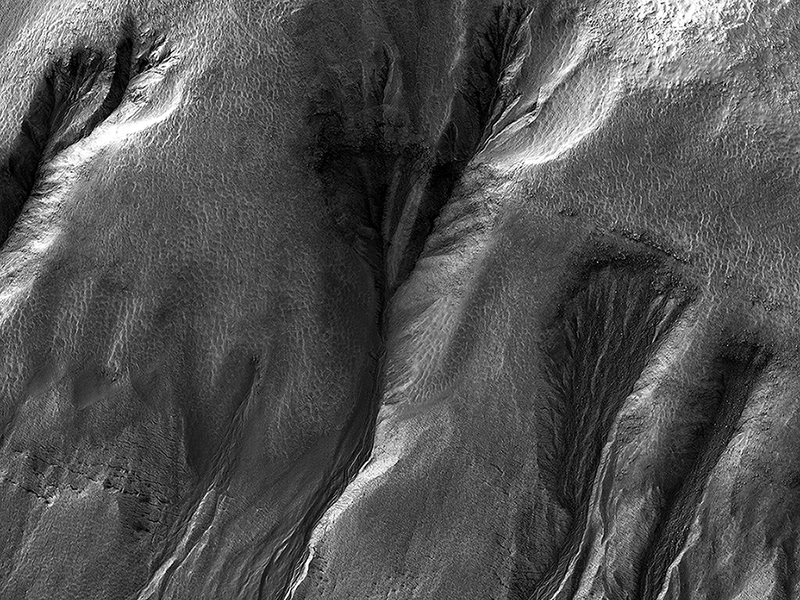HiRISE Updates (2016 Mar 09)
Posted: Sat Mar 12, 2016 6:37 pm
Sharon Wilson wrote:The Northwest Floor of Gale Crater (ESP_043816_1750) (HiClip)
West of the Curiosity landing site, this image along the northwestern floor of Gale Crater is between Aeolis Mons (informally called “Mt. Sharp”) and the crater rim.
A small, 5 kilometer-diameter impact crater to the west created lobes of ejecta. These light-toned deposits may contain hydrated minerals.
Sharon Wilson wrote:The Southern Floor of Gale Crater (ESP_043961_1740) (HiClip)
This image along the southern interior floor of Gale Crater hosts many different landforms. Light-toned, scabby, and presumably hydrated materials on the crater floor are covered by large, darker-toned dunes.
The small crater, about 2 kilometers in diameter, in the middle of the image is filled with an enigmatic deposit that appears to have flowed into the crater from the south.
Ross Beyer wrote:The Dune Sea of Ganges Chasma (ESP_044258_1715) (HiClip)
This image is at the eastern edge of a very large deposit of wind-blown dust that occupies Ganges Chasma.
This thick deposit surrounds hills and mesas that rise up through it. We can tell from the patterns that the wind here is primarily blowing from east to west. There is a large cone-shaped hill whose eastern toe is surrounded by a dune crest, but its western toe--and a lane that stretches off the image frame--is clear of this dust deposit.
High-standing features like this might cause the wind to flow around it in such a way as to leave a cleared area that is similar to a wake behind a boat.
Colin Dundas wrote:Night Vision (ESP_044709_1275) (HiClip)
It’s hard to see in the dark. Most HiRISE images are are taken when the sun is at least 15 degrees above the horizon. (If you hold your hand at arm’s length with fingers together, it’s about five degrees wide on average.) However, to see what’s going on in winter, we need to look at times and places where the Sun is just barely over the horizon.
This image was taken to look at seasonal frost in gullies during southern winter on Mars, with the Sun only about two degrees over the horizon (just before sunset). To make things more difficult, the gullies are on a steep slope facing away from the sun, so they are in deep shadow. Under these conditions, HiRISE takes what are called “bin 4” images. This means that the image shows less detail, but by adding up the light from 16 pixels (a 4x4 square) we can see details in shadows.
Even with the reduced resolution, we can see plenty of detail in the gullies, and learn about the seasonal frost.
Credit: NASA/JPL-Caltech/University of Arizona
<< Previous HiRISE Update



